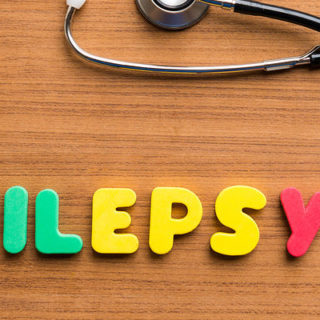The First 6 Steps: What You Need to Know About an Epilepsy Diagnosis
Epilepsy can be a frustrating illness to deal with for both sufferers and their families. The condition is common — millions of people experience epileptic seizures — but it’s not as well-understood as one would hope. It can arise after an accident or an illness, but often, the cause of the onset of epilepsy is never discovered.
Adding to many families’ experience is the young age of most epilepsy sufferers. The majority of people in the United States with an epilepsy diagnosis began seizing when they were young children — often before the age of 10 — even though many will outgrow the disorder by the time they reach adulthood, notes the Epilepsy Foundation.
If you’re a parent whose child has been diagnosed with epilepsy, it’s normal that you might feel lost, confused, or unsure of how to proceed. Here are six steps you can take after your child’s epilepsy diagnosis to help guide you during this challenging time.
Step 1: Educate Yourself
The first step is to become acquainted with the condition. The Epilepsy Foundation provides a free online toolkit for parents of children who have been newly diagnosed with seizure disorder. In it, you’ll find facts about the disease that will help you better understand what it is and how to manage it.
Step 2: Educate Your Child
Naturally, how you explain epilepsy to your child will vary based on her or his age. If he or she is very young, you might find an analogy — for instance, that the cells in their brain are like a room of kids where everyone’s trying to talk at once, so things become very confused. If the child is a little older, they may be able to understand that seizures are electrical signals to the muscles that occur too rapidly, which is why their body starts moving.
Pediatric neurologists and their staffs have these conversations on an almost daily basis and can assist you with the discussion. There are also books available for kids of every age to help them understand what’s happening to their bodies.
Step 3: Have the Right Attitude
Parents’ attitudes towards epilepsy have a profound effect upon the attitudes of their children. Your son or daughter will likely take on the same mental and emotional approach that you adopt. In order for your children to feel supported and capable of living well with this disease, you need to feel the same way.
Step 4: Get Support
To help you maintain that positive attitude, seek out support from other families that live with epilepsy. You can build your own community as well by bringing together your own friends and family, your child’s teachers and friends, and the parents of those friends.
Step 5: Recruit Those Closest to You
Have members of your family, your child’s friends, and their parents watch videos that demonstrate how to give seizure first-aid from trusted sources like the Epilepsy Foundation. Babysitters, sports coaches, and other caregivers should receive proper training on how to care for your child during a seizure, the Epilepsy Foundation notes. The Epilepsy Foundation also explains there are classes that the nurse at school can take, so that he or she can manage any symptoms that occur there. Anyone likely to come into contact with your child should understand how to behave during a seizure.
Step 6: Work to Avoid Seizures
Seizures have many triggers, including stress, alcohol, and lack of sleep, according to the Epilepsy Society. For young children, some of the most common triggers include running around in the sun, not staying hydrated, and not properly taking medication. Bright flashing lights and loud sounds can also trigger seizures in some children with epilepsy, but not all.
Emphasize to your child that avoiding triggers and taking their medications on time every day will increase their odds of staying healthy and getting to do the things that they want to do — although activities like driving, operating heavy equipment, and traveling alone will likely need to be delayed until the seizures have stopped.
It’s tough for anyone to deal with a disease or condition that affects their lives, but for a child to know that she or he may fall down at any moment and need help from friends or strangers can be particularly scary. It may even feel unfair.
Acknowledge those feelings, and remind your child that there are millions living with epilepsy, as well as other diseases like asthma and allergic reactions, who live well and happily. Managing epilepsy is a long process that you, your child, your family, and your community will go through together, one step at a time.



Leave a Reply